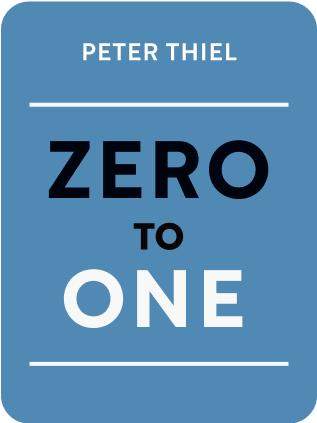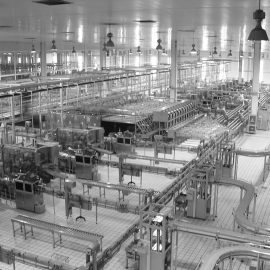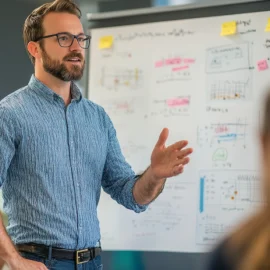

This article is an excerpt from the Shortform summary of "Zero To One" by Peter Thiel. Shortform has the world's best summaries of books you should be reading.
Like this article? Sign up for a free trial here .
What do modern technology and globalization have to do with each other? Why do they matter for startups?
Technology and globalization have been on the forefront of many peoples’ minds for years. Some are worried about technology and globalization—for others, it’s an opportunity. See why.
Technology and Globalization: The Challenge of the Future
Peter Thiel likes to ask job candidates what he calls a contrarian question: “What important truth do few people agree with you on?” The best answers point to the future.
Thiel’s answer is that most people think globalization will dictate or determine the world’s future, but he believes it’s technology that will.
The future will be rooted in today’s world, but different. It may be farther away or closer than we think, depending on the degree of progress we make. If things aren’t likely to change much over the next century, then the future is a century away; If they’re destined to change rapidly in the next decade, then the future is a decade away. So how do modern technology and globalization work together?
Answering the contrarian question is the closest we can come to predicting what will be.
The Path of Progress
Progress can be either horizontal or vertical. Horizontal or expansive progress results from duplicating success—going from 1 to n. We can easily envision this kind of progress because it’s much like the present. Vertical or intensive (focused) progress requires doing something new—going from 0 to 1. It’s more difficult to envision because we’ve never seen it before.
For example, starting with one typewriter and building 100 would be horizontal progress (duplicating something). In contrast, starting with a typewriter and building a word processor would be vertical progress (creating something new).
Globalization is horizontal progress—it entails taking something that works in a particular place and replicating it everywhere. For instance, China’s 20-year plan is to be like the West is today.
Technology, going from 0 to 1, is vertical progress—it encompasses anything new and better, including but not limited to computers.
These modes of progress can occur simultaneously or one at a time. For instance, the period from World War I through Nixon’s visit to China in 1971 featured technological development but not much globalization. However, since 1971, we’ve seen rapid globalization without much technological development beyond information technology.
Globalization is a path to homogenization. The way we talk about it implies a belief that technological progress has a peak: we refer to the developed and developing worlds as though Western nations have reached a fixed level of achievement to which poorer nations must catch up.
But continued globalization isn’t feasible without technological progress, because the industrialization of more countries will lead to more problems. For instance, if China doubles its industrial production without technology improvements, it will double its air pollution. Spreading the practices of developed countries globally will bring ruin rather than wealth.
New technology and globalization have never been a given. From the primitive agrarian societies thousands of years ago up until the advent of the steam engine in the 1760s, there was little technological progress. From that point, technological advances continued through 1970. In the late 1960s, however, people looked forward to a future of tech advances that didn’t happen—for instance, cheap energy and vacations on the moon. Although they expected great advances to be automatic, only computers and communications advanced dramatically. The key to a better future is both imagining and creating the technologies to get us there.
Technology and Globalization: Substitution and Complementarity
We’ve seen that humans can replace or substitute for each other as a result of globalization—for instance, Indian, Chinese, or Mexican workers can replace American workers in manufacturing and customer service
Americans fear globalization through technology will one day do the same thing—for instance, giant server farms will take over work people are doing. But these scenarios are different. In a global marketplace, people compete with each other for jobs and resources, but computers don’t compete with humans for either one—again, they complement people by increasing their abilities.
Globalization Substitutes
Can globalization through technology help us? In 1992, third-party presidential candidate and businessman H. Ross Perot warned about the dangers of foreign competition, famously predicting a “giant sucking sound” as American jobs flowed to Mexico under the North American Free Trade Agreement.
In contrast, Presidents George H.W. Bush and Bill Clinton extolled free trade, in which governments refrain from trying to gain an advantage by placing tariffs on imports or subsidizing exports. The idea is that everyone ultimately will be richer if people specialize based on their advantages (such as resource availability) and trade with each other.
In practice, this has worked better for some workers than others. Countries usually gain the most from trade when they have the biggest advantages. But having a big unskilled labor supply can be an advantage too.
However, the challenge of the future won’t be competition for labor between countries, it will be competition for resources. And global resources are limited. Already, while Americans enjoy low-priced consumer goods from China, we pay more for gasoline because as China develops, it consumes more of the global supply of oil that we’re competing for.
People in all countries will demand more as their basic needs are met and as globalization continues.
Technology Complements
The answer to competition for scarce resources is technology and globalization that helps people live better.
People and computers are good at different things. People excel at making plans and decisions in complicated situations; they’re not as good at analyzing huge amounts of data. In contrast, computers excel at processing data, but can’t make judgments that are easy for humans.
For instance, in 2012 one of Google’s supercomputers scanned 10 million YouTube videos and learned to identify a cat with 75% accuracy. However, a four-year-old can do it with 100% accuracy. A laptop can beat mathematicians at some tasks, but a supercomputer can’t beat a child at others.
The different capabilities of humans and computers mean that we can gain more from working with computers than from trading with other people. Other people are like us and do what we do; in contrast, technology helps us do more. People substitute; technology enhances. Globalization through technology is the way to improve lives.
Complementary Businesses
You can build a high-value business if you combine the complementary capabilities of humans and computers.
For example, PayPal software developers attacked credit card fraud this way. The company was losing $110 million a month to fraud, but having someone review each transaction was impossible due to the number of transactions. So the company wrote software to automatically spot and cancel fraudulent transactions. This worked until the hackers changed tactics, fooling the detection algorithms. However, the developers found that the tactics didn’t fool human analysts as often.
The solution was to take a hybrid approach combining the strengths of computers and humans: PayPal developers rewrote the software to flag suspect transactions for human review. The approach was so successful the FBI expressed interest—which led Thiel to create Palantir, a company using a human-plus-computer approach to analyze a wide array of information to identify terrorist networks and financial crimes.
Founded in 2004, Palantir was rumored to have helped the U.S. locate 9/11 mastermind Osama bin Laden. In the book, Thiel comments, “We have no details to share from that operation.”
In addition to searching for terrorists, analysts using Palantir software have:
- Predicted where insurgents would plant IEDs in Afghanistan
- Prosecuted high-profile insider trading
- Eliminated the world’s largest child pornography ring
- Helped the CDC fight food-borne disease outbreaks
- Detected fraud for banks and the government
But neither the software nor the professionals alone could have solved these problems. Globalization through technology doesn’t replace analysts, financial experts, and other professionals: it enhances their capabilities.
Modern technology and globalization go hand in hand. With the right business model, globalization and technology can complement each other to improve lives.

———End of Preview———
Like what you just read? Read the rest of the world's best summary of Peter Thiel's "Zero To One" at Shortform .
Here's what you'll find in our full Zero To One summary :
- Why some companies genuinely move the world forward when most don't
- How to build a company that becomes a monopoly (and why monopolies aren't bad)
- Silicon Valley secrets to selling products and building rockstar teams






